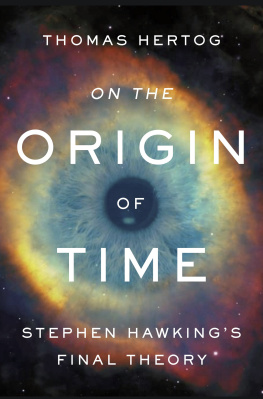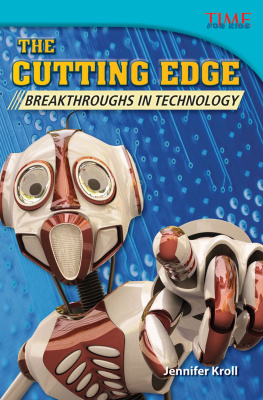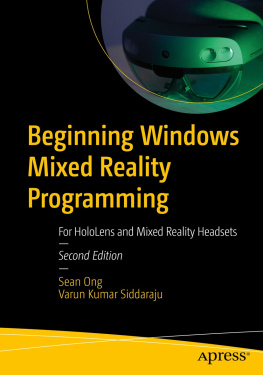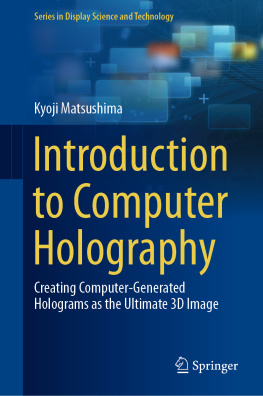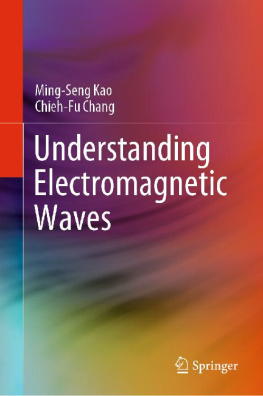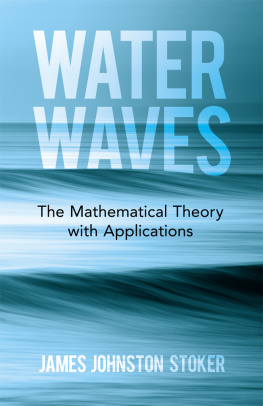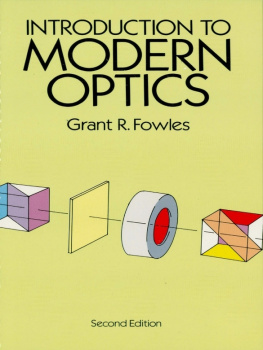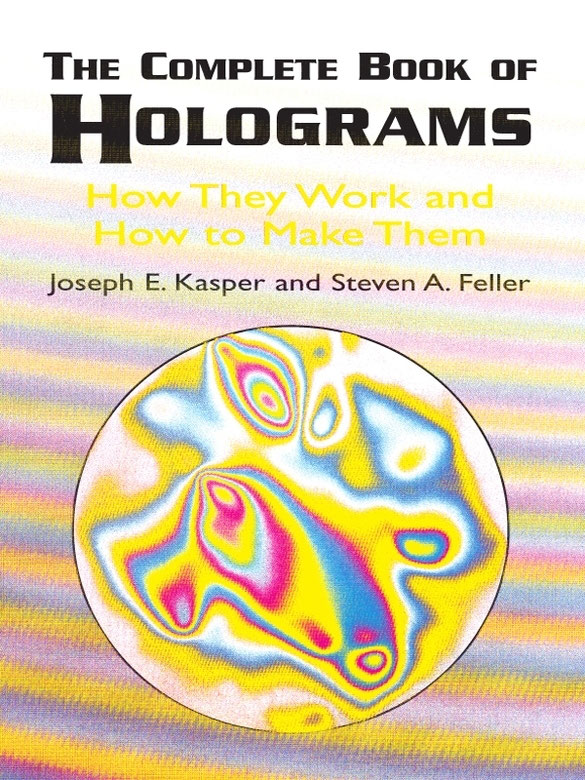
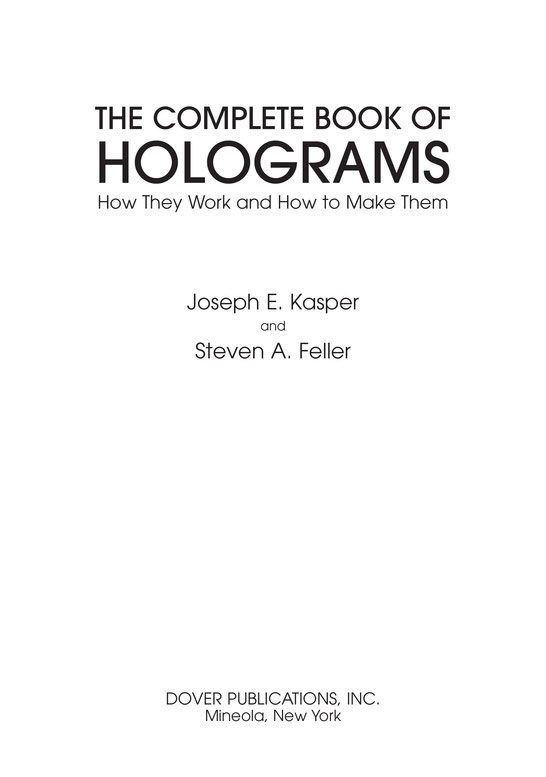
Copyright
Copyright 1987, 2001 by Joseph E. Kasper and Steven A. Feller
All rights reserved.
Quotations in the Preface and in Chapter from the Nobel Prize Address of Dennis Gabor are used with permission of the Nobel Foundation. The address is copyright 1972 by the Nobel Foundation.
Quotations in Chapter from Geometric Model for Holography by Tung H. Jeong, American Journal of Physics, Vol. 43, No. 8, August 1975 are used with the permission of the copyright owner, The American Association of Physics Teachers, copyright 1975, and Dr. Jeong, who further kindly granted permission to use all information he has published.
The quotation in Chapter from Demonstration Holograph for Comparing an Image Lens and a Real Lens by Mac Rugheimer and Larry D. Kirkpatrick, American Journal of Physics, November 1977 is used by permission of the copyright owner (The American Association of Physics Teachers) and Mac Rugheimer and Larry D. Kirkpatrick.
Figures 1.1, 5.1, and 10.3 are used with the permission of Mr. Rainbows, P.O. Box 27056, Philadelphia, PA 19118.
Figure 11.1 was prepared from a special copy of an original holographic micrograph of an argon atom, which was most kindly loaned by Dr. L. S. Bartell, Department of Chemistry, University of Michigan, Ann Arbor, Michigan, with his permission to use it.
Bibliographical Note
This Dover edition, first published in 2001, is an unabridged republication of the work published by John Wiley & Sons, Inc., New York, in 1987; the work originally was published in 1985 under the title The Hologram by Prentice-Hall, Incorporated, Englewood Cliffs, N.J. Appendix II: Some Sources of Materials and Information has been updated for the Dover edition.
Library of Congress Cataloging-in-Publication Data
Kasper, Joseph Emil, 1920
The complete book of holograms: how they work and how to make them
/Joseph E. Kasper and Steven A. Feller.Dover ed. p. cm.
Originally published: The hologram book. Englewood Cliffs, N.J. :
Prentice-Hall, Inc., 1985.
Includes bibliographical references and index.
9780486152714
Holography. I. Feller, Steven A. II. Title.
QC449 .K37 2001
774.0153dc21
2001017388
Manufactured in the United States of America
Dover Publications, Inc., East 2nd Street, Mineola, N.Y. 11501
Table of Contents
Title Page
Copyright Page
Foreword
Preface
- Holography and ordinary photography
- The interference of water waves
- The interference of light waves
- Holography: The geometric model
- More about transmission holograms
- Reflection holograms
- Phase holograms and some other types
- Some basic setups for making holograms
- Diffraction and the zone plate model
- Rainbow and other copy holograms
- Some special techniques and applications
- Holography in movies, television, and data storage
- How to make holograms: Part
- How to make holograms: Part
Appendix I: Laser safety
Appendix II: Some sources of materials and information
Index
Foreword
One of the pleasures of my professional life has been knowing the senior author of this book, Joseph E. Kasper, first when he was a graduate student at the University of Iowa and then for many years as a member of the faculty of nearby Coe College. The Hologram Book exemplifies the quality of that pleasure. To paraphrase a remark that I made at a public occasion a few years ago: When Kasper and Feller explain a physical phenomenon, they really explain it . . . with depth, sophistication, and clarity.
A hologram is a photographic record of the interference pattern of two superimposed beams of coherent light, one directly from the source and the other reflected or scattered from a physical object. The proper viewing of a hologram is an eerie and mystical experience. No curious person can fail to ask for an explanation. It is for such a person that this book has been written.
The authors treat the subject with rigor and loving care but with minimal mathematics. Every sentence is turned out with expository pride. The reader is treated as an uninformed but interested and intelligent friend. There is no hint of condescension. There are no it-is-obvious-thats or it-can-be-shown-thats. Explanations are lucid and full. The exposition proceeds chapter by chapter in easy stages, replete with clear diagrams that are closely integrated with the text. A casual reader might be satisfied with the first eight chapters, but the book is like a good mystery story and a truly interested reader, as I was, can scarcely wait to find out what happens next. The latter portion of the book descibes the multifold applications of holography in modern technology, and last, but not least, there are two detailed and excellent chapters for the experimentally inclined person on How to Make Holograms.
I predict that Kasper and Feller will become a standard reference on holography for students and interested laymen. It might well be called The Compleat Book of Holograms.
JAMES A. VAN ALLEN
Carver Professor of Physics
University of lowa
Preface
In his acceptance speech when awarded the Nobel prize for his invention of holography, Dr. Dennis Gabor said, I have the advantage in this lecture . . . that I need not write down a single equation or show an abstract graph. One can, of course, introduce almost any amount of mathematics into holography, but the essentials can be explained and understood from physical arguments. Indeed, Dr. Gabor could have said, ... understood from simple physical arguments.
It is our goal to serve readers with no background in the science of optics with a systematic but easily read book on holography that explains those physical arguments. We believe that there are many people such as students, artists, photographers, hobbyists, and others who want a satisfying explanation of holography. Their question How do holograms work? is one to which this book is addressed.
The book was written to be usable in an introductory course at the high school or college level and also to be pleasantly readable by any interested reader on his or her own. According to an ancient saying, there is no royal road to geometry, and equally there is none to holography, but anyone can come to a sound basic understanding of the subject by proceeding step by step down what is a fairly short road.
A special feature of this book is its use of what is called the geometric model of holography originated by Dr. T.H. Jeong. This is a simple and intuitively appealing model. Because many properties of holograms depend on what are called diffraction phenomena, with which the geometric model does not deal, we also explain the older zone plate model.
We have included extensive discussions of applications of holography, some of which are in common practice today, and some, such as holographic movies and television, that are still undergoing development.
We have also had in mind readers who may want to try their hands at making holograms. For those readers, we have included descriptions of a number of different ways to make holograms and practical advice about equipping a holographic lab. In doing this, we have stressed the particular method that we have found to be simple, effective, and relatively inexpensive. For those who wish to go further in experimentation, we offer additional assistance.


